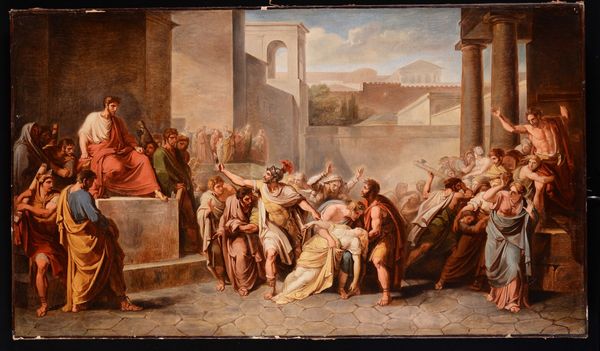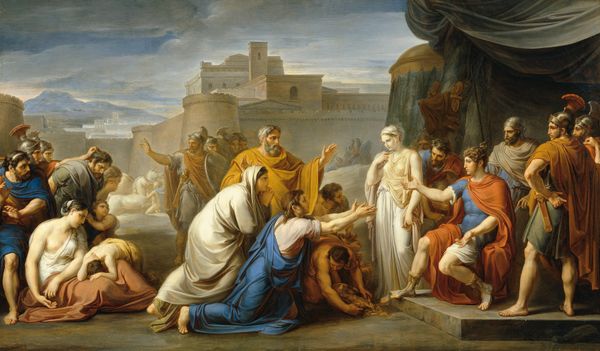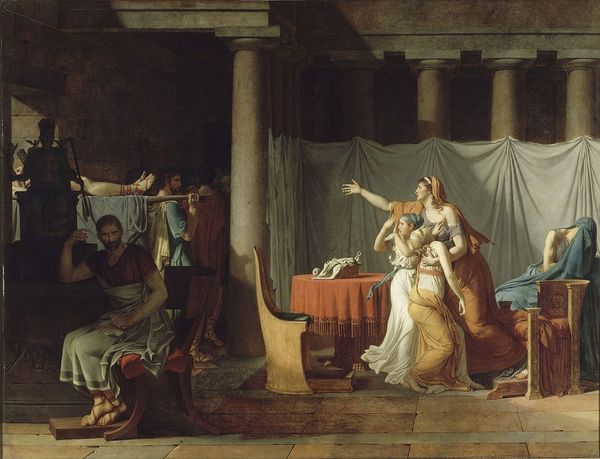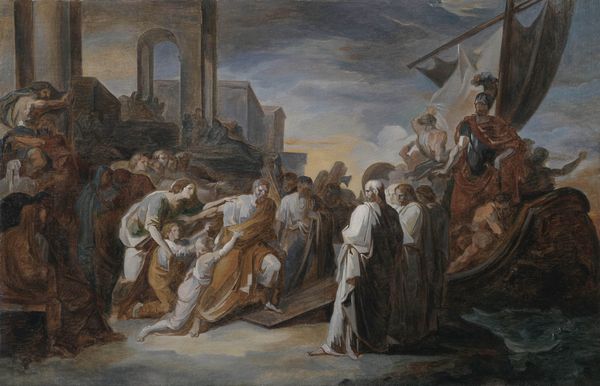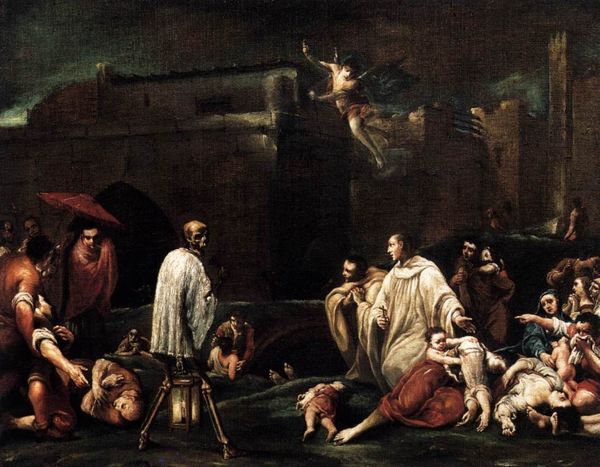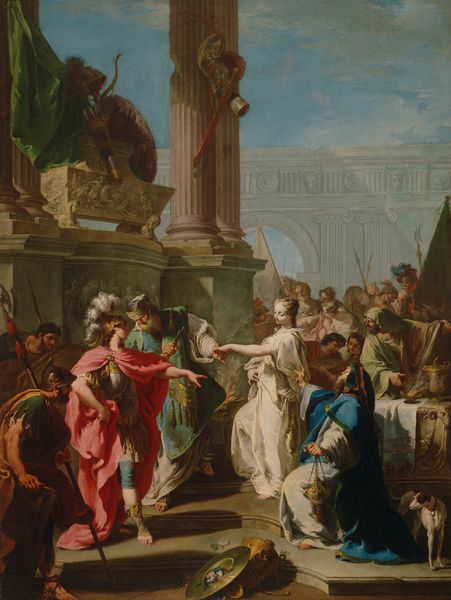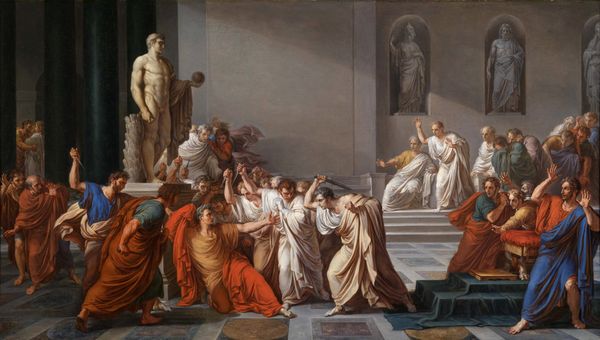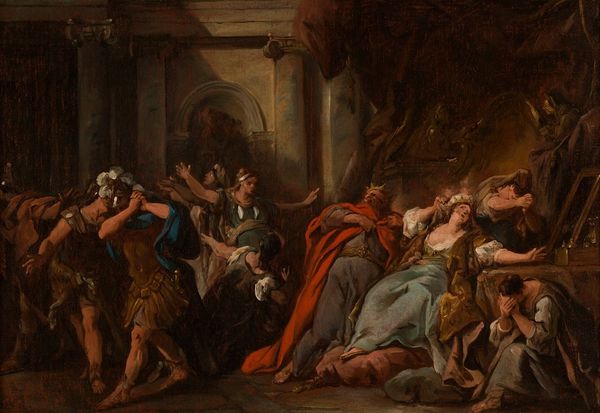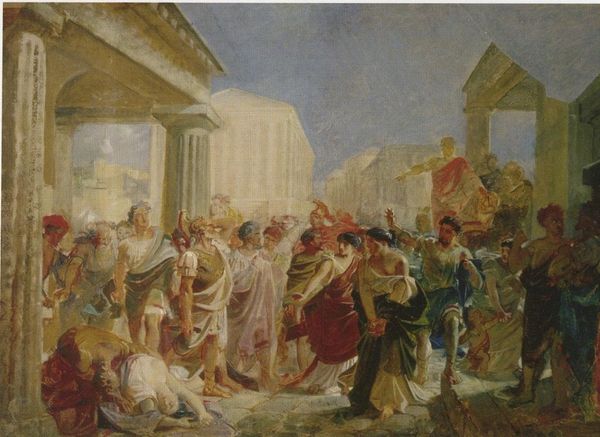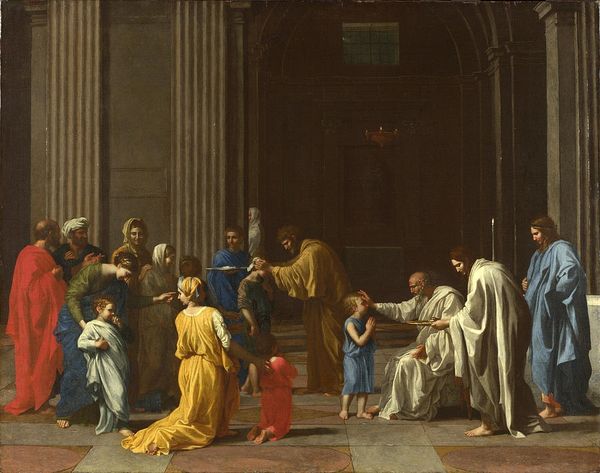
painting, oil-paint
#
neoclacissism
#
painting
#
oil-paint
#
figuration
#
oil painting
#
history-painting
#
academic-art
Dimensions: 83 x 105 cm
Copyright: Public domain
Curator: Here we have Francesco Hayez's "The Coronation of Joas," painted in 1860. What strikes you about it? Editor: The overwhelming scale and washed-out color palette immediately create a sense of subdued drama, almost theatrical, wouldn’t you say? The composition, particularly the positioning of Joas above the distressed crowd, feels carefully staged. Curator: Indeed. Hayez, a prominent figure of the Italian Neoclassical and Romantic movements, likely chose oil paint to best capture the gravity of the subject and emphasize a smooth surface in the classical style, thereby lending this grand historical painting a certain tangible monumentality. One might ask to what extent, and by what means, was materiality important in constructing meaning? Editor: Note the light itself, streaming across the scene, illuminating Joas but casting much of the foreground in shadow. Semiotically speaking, isn’t that light symbolic of divine favor, the very legitimacy of his rule shining upon him, distinct against what seems like a crisis? Curator: Undoubtedly, light in painting is almost never simply illumination. Consider also, the likely economic and social conditions which produced this lavish and somewhat romanticized vision of historical governance. Do you get the impression that the artist here, while technically proficient, perhaps idealizes and mystifies political power, distancing it from labor? Editor: Maybe so. Yet it's fascinating how the pyramidal composition, rising from the chaos on the lower level to the calm coronation at the top, creates a visual hierarchy, almost reinforcing traditional power structures. That strong directional line guides our eye precisely where Hayez intends. Curator: Yes, but through what networks of production and dissemination does an artwork like this emerge, and how does the context of mid-19th century art institutions shape its content and reception? It certainly tells a particular story of governance, but perhaps it's one divorced from the material realities experienced by those whose lives it governed. Editor: But perhaps it's this detachment that allows the scene to operate at a symbolic level, raising it above any immediate political contestations. Look at the repetition of color - from the central figure of Joas down throughout the garments of the figures - drawing your eye back. This adds a symbolic sense of cohesion within the fraught moment. Curator: Very true, but where does this sense of cohesion leave those kneeling in the foreground, materially subjected? Food for thought. Editor: Absolutely. Every line and shadow, choice of color, and calculated perspective feels deliberately employed to orchestrate a profoundly compelling experience. Thank you for sharing your insights.
Comments
No comments
Be the first to comment and join the conversation on the ultimate creative platform.
